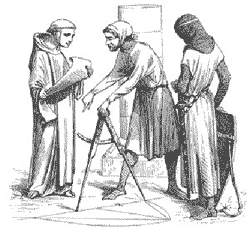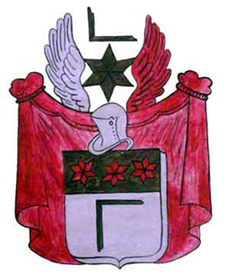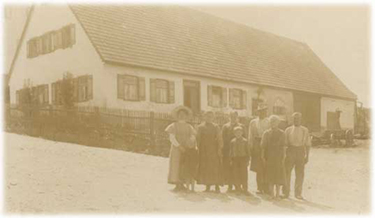Germany
This page contains information and pictures provided by Sean & Regina Lorenz.
The Winkler history can be traced back to the 11th century in Basel. In the year 1019 the city was inaugurated by Emperor Henry II and merged into the Roman Empire in 1032.
The Winkler family name came from a certain kind of worker who helped build the walls, streets, and houses in the flourishing city. Unlike a carpenter or mason who was worried about the appearance of his project, a Winkler paid particular attention to the usefulness and relevance of his project.


In 1225, Prince-Bishop Heinrich von Thun ordered the first bridge be built over the Rhine River. To protect the bridge, he also ordered the city of Kleinbasel be built on the north side of the river. Large construction projects such as this were planned by the nobleman then handed to the Winkler to carry out. This is probably one reason the Winklers were granted their civil rights in the year 1283.
The 14th century brought great despair for the Winklers. In 1331, a plague emerged in China and was brought to Europe by Chinese ships through Sicily. The "Black Death" spread over the Alps and hit Basel in 1348. The plague killed half the population of Basel. Then in 1356 there was a great earthquake that destroyed large parts of the city. This caused parts of the Winkler family to leave the area in the direction of Austria.
Coat of Arms
The Winkler Coat of Arms was discovered behind a wall during the renovation of an old farm house in Dorfmerkingen.

Das Wappen der Familie
Winkler
Sigesmund Winkler aus Wien fuhet
dieses von ihm in Altorf ausgefuhrte
Wappen welches im Walcher’ schen
Stammbuch aufgelegt ist – Winkler
starb am 9. April 1627
Sigesmund Winkler aus Wien fuhet
dieses von ihm in Altorf ausgefuhrte
Wappen welches im Walcher’ schen
Stammbuch aufgelegt ist – Winkler
starb am 9. April 1627
Winkler
Sigesmund Winkler from Vienna used
this coat of arms, which he
executed in Altorf and which is
published in Walcher's family register
Winkler died on April 9, 1627
Winklerhof
Winklerhof means a small farm of the Winklers. This family picture is from 1902 taken on the farm in Dorfmerkingen.
